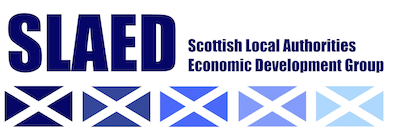Scottish Local Authority Aid for Ports (SC10299)
Legal Context
In terms of Section 20 of the Local Government in Scotland Act 2003, Scottish Local Authorities may provide aid for the development of ports
Objective of the Scheme
The objective of the scheme is to permit Scottish local authorities to support investment in maritime and inland ports.
Eligible Costs - Maritime and Inland Ports
The eligible costs shall be the costs, including planning costs, of:
(a) investments for the construction, replacement or upgrade of port infrastructures;
(b) investments for the construction, replacement or upgrade of access infrastructure;
(c) dredging.
Costs relating to non-transport related activities, including industrial production facilities active in a port, offices or shops, as well as for port superstructures shall not be eligible costs.
With respect to dredging, a project is defined as all dredging carried out within one calendar year.
Aid Intensities and Limits - Maritime Ports
The aid amount shall not exceed the difference between the eligible costs and the operating profit of the investment or dredging. The operating profit shall be deducted from the eligible costs ex ante, on the basis of reasonable projections, or through a claw-back mechanism.
For aid not exceeding £4.25million, the maximum amount of aid may be set at 80 % of eligible costs, as an alternative to application of the above method.
The aid intensity per investment referred to in point (a) of section 3 shall not exceed:
(a) 100 % of the eligible costs where total eligible costs of the project are up to £17 million;
(b) 80 % of the eligible costs where total eligible costs of the project are above £17m million and up to £42,5 million;
(c) 60 % of the eligible costs where total eligible costs of the project are above £42.5 million and up to £110.5 million
The aid intensities laid down in points (b) and (c) above may be increased by 5 percentage points for investments located in assisted areas.
Any concession or other entrustment to a third party to construct, upgrade, operate or rent aided port infrastructure shall be assigned on a competitive, transparent, non-discriminatory and unconditional basis
The aided port infrastructure shall be made available to interested users on an equal and non-discriminatory basis on market terms.
Aid Intensities and Limits - Inland Ports
The aid amount shall not exceed the difference between the eligible costs and the operating profit of the investment or dredging. The operating profit shall be deducted from the eligible costs ex ante, on the basis of reasonable projections, or through a claw-back mechanism.
The maximum aid intensity shall not exceed 100 % of the eligible costs up to £34 million per project .
For aid not exceeding £1,7m million, the maximum amount of aid may be set at 80 % of eligible costs, as an alternative to application of the above method.
Any concession or other entrustment to a third party to construct, upgrade, operate or rent aided port infrastructure shall be assigned on a competitive, transparent, non-discriminatory and unconditional basis.
The aided port infrastructure shall be made available to interested users on an equal and non-discriminatory basis on market terms.
Definitions
“Assisted Areas” refers to areas designated in terms of the Assisted Areas Order 2014 as amended by the Assisted Areas (Amendment) Order 2017.
“Port” means an area of land and water made up of such infrastructure and equipment, so as to permit the reception of waterborne vessels, their loading and unloading, the storage of goods, the receipt and delivery of those goods and the embarkation and disembarkation of passengers, crew and other persons and any other infrastructure necessary for transport operators in the port;
“Maritime port” means a port for, principally, the reception of sea-going vessels
“Inland port” means a port other than a maritime port, for the reception of inland waterway vessels;
“Port infrastructure” means infrastructure and facilities for the provision of transport related port services, for example berths used for the mooring of ships, quay walls, jetties and floating pontoon ramps in tidal areas, internal basins, backfills and land reclamation, alternative fuel infrastructure and infrastructure for the collection of ship-generated waste and cargo residues;
“Port superstructure” means surface arrangements (such as for storage), fixed equipment (such as warehouses and terminal buildings) as well as mobile equipment (such as cranes) located in a port for the provision of transport related port services;
“Access infrastructure” means any type of infrastructure necessary to ensure access and entry from land or sea and river by users to a port, or in a port, such as roads, rail tracks, channels and locks;
“Dredging” means the removal of sediments from the bottom of the waterway access to a port, or in a port
“Vessels” mean floating structures, whether self-propelled or not, with one or more surface displacement hulls;
“Sea-going vessels” mean vessels other than those which navigate solely or mainly in inland waterways or in waters within, or closely adjacent to, sheltered waters;
“Inland waterway vessels” mean vessels intended solely or mainly for navigation on inland waterways or in waters within, or closely adjacent to, sheltered waters;
Budget
The estimated budget of the scheme is £30m over a 5 year period.
Duration
The scheme will operate from 1st January 2021 to 31st December 2025.
(ML / June 2021)

